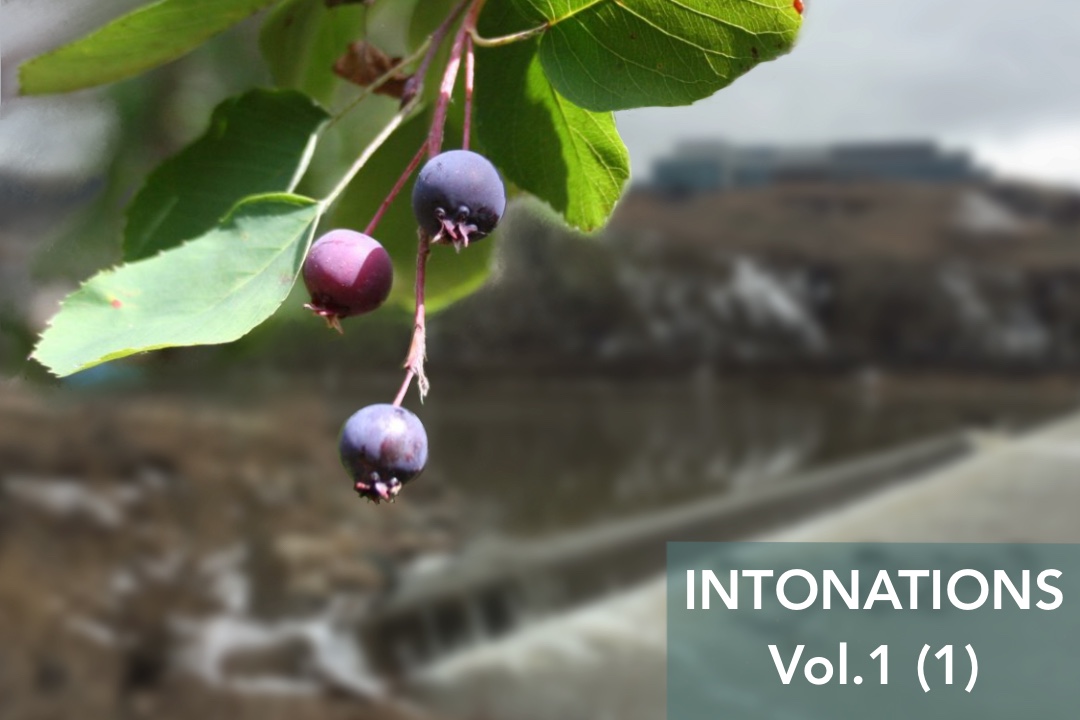Editorial Preface
DOI:
https://doi.org/10.29173/inton69Abstract
On behalf of the Editorial team, welcome to the inaugural issue of Intonations, a journal of interdisciplinary arts. Previously affiliated solely with the Department of Music, in 2019 Intonations expanded to include the Departments of Art and Design, and Drama. It was at that time that three new Editors-in-Chief, one from each department, were appointed. The first year was a time for redefinition as we came together from across academic silos to forge a new identity for the journal. Our mandate is to promote multidisciplinary/transdisciplinary collaboration and to encourage dialogue between different modes of scholarly, artistic, disciplinary, and professional engagement. Intonations focuses on the convergences of theory and artistic practice in various domains of the fine arts, as well as intersections with the humanities, sciences, and beyond. Our goal is to support the work of current scholars and creative practitioners by generating dialogue and innovative thinking, both locally and internationally.
Our first Call for Papers was released in early-January 2020, and now just over a year later, we are very excited to share our first full issue which includes three articles in response to our call, “We Other Fairies”, “Saskatoon Berries”, and “Having Walked Alongside”, which have been bundled with two previously published articles submitted prior to the merge: “Blipvert Method” and “Sinfonia de Babel”. With this evolutionary process in mind, we are now proud to share this body of work. Written by graduate students and practicing artists, the articles in this issue are wide ranging in scope and style while still tethered through several points of intersection.
2020 was not an easy year. However, the difficulties of living through a global pandemic have also led to new and exciting forms of research and reassessment. Authors Xavia Publius in “We Other Fairies” and Tyler Stewart and Miguelzinta Solís in “Having Walked Alongside” both address the global pandemic by drawing attention to the challenges of not being able to gather together. In Publius’s case, this has necessitated a turn to diary-writing and greater self-reflection. For Stewart and Solís, social distancing from close friends gave way to scholarly collaboration and an experimental audio project that engaged with distance communication, landscape, and decolonial theories.
For many, greater engagement with space and place has been a necessary outcome of the pandemic. In both the audio project of Stewart and Solís and the writing of Kufre Usanga “Saskatoon Berries”, we follow the footsteps of the authors as they traverse their lived experience through land. Between two valleys and spanning two Alberta rivers, the North Saskatchewan and the Oldman, these articles perform “place-thinking” (Usanga) through the intersection of embodied knowledge, Indigenous teachings, and personal reflection. Similarly, in “We Other Fairies”, Publius seeks to decentre patriarchal and heteronormative spaces through her exploration of theatre and film as a site for the proliferation and celebration of queer voices: the “Others” that have so frequently been elided from theatre and other forms of cultural production. For Publius, theatre represents a space for the carnivalesque – where norms and mores are suspended, and queer characters are free to assert themselves, for however temporary a time, “oscillating between liminal and liminoid spaces” (Publius).
An important aspect of this issue is the inclusion of extra-textual and multimedia elements. Stewart and Solís’s contribution takes the form of an hour-long recorded dialogue, mediated by an engaging walk through the weirs, gullies, and coulees of Lethbridge’s Old Man River Valley. Using both textual and multimedia platforms, William Northlich and Nicolas Arnáez each lead the reader through multiple levels of unity and/or integration between musical, sonic, visual, and textual elements. Their textual components are accompanied by audio and visual elements which enrich the reading experience and, in fact, are necessary for understanding the text. Arnáez’s “La Sinfonia de Babel” demonstrates how musical citation and an imaginary sound archive add parameters to the experience of a sonic library based on a creative approach toward citation from musical and literary perspectives. Northlich’s “Blipvert Method” provides a structural and performative analysis of his electronic music composition through which the virtual sound, improvisatory character, and body movements sit in a musical collage.
At the same time that Western and Settler hegemony are being questioned within the pages of this issue, so too is the attendant dominance of the visual. These articles open space for oral, aural, tactile, imaginative, and emotional forms of knowledge and experience. Shared amongst the disciplines of the Fine Arts is this emphasis on praxis and embodied experiences which are qualities that cannot be universalised, and which must be specified and expressed at a personal level. Therefore, whether through the form of diary, personal essay, artist’s statement, multimodal analysis/description, or mediated dialogue, the articles that make up Volume 1, Issue 1 of Intonations are profoundly reflective and meditative. They invite us to slow down, engage with ourselves, our communities, and the natural world around us. In a year that has become increasingly difficult as time goes on, the authors, researchers, and practitioners published here offer not only new perspectives on the world, but alternative ways of being and existing in the world.

Published
How to Cite
Issue
Section
License
Copyright (c) 2021 Nasim Ahmadian; Brandi Shantelle Goddard; Thea Patterson

This work is licensed under a Creative Commons Attribution-NonCommercial-NoDerivatives 4.0 International License.
Intonations is an open access journal and employs a Creative Commons Attribution-NonCommercial-


